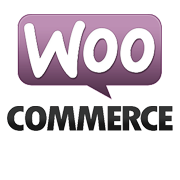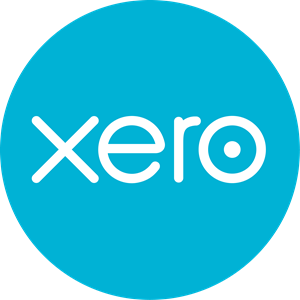How We Started A Clothing Manufacturing Business
Hello! Who are you and what business did you start?
Hello from sunny Singapore! My name is Donovan and I am the founder of Bryden.
We are a clothing manufacturing agency with offices in Singapore & China and we specialise in providing an end to end service for fashion brands to create & manufacture their products.
Our goal is to help fashion businesses all around the world to create quality products easily from the comfort of their office or home.
Our customers are typically small to medium sized businesses and we take delight in helping them to compete with the bigger brands by offering a wide range of customisation & product options that are usually out of reach due to large order quantities imposed by manufacturers.
I started Bryden back in 2015 with my partner and we are now a team of 8, with an average monthly revenue of $74,000 and serving customers in more than 20 countries from French Polynesia to USA.

What's your backstory and how did you come up with the idea?
I started my own t-shirt brand called Ardentees back in 2009 when I was still in school as e-commerce was starting to get popular. I was intrigued by the whole idea of e-commerce as you could reach a worldwide audience easily. I especially loved the idea of waking up to see emails of orders from customers around the world.
I always had that inner voice urging me to start something on my own related to sourcing & manufacturing and I decided to register a business to reserve the name.
After getting 2 friends on board, we spent a year sourcing & testing different manufacturers with major hiccups along the way before finally able to settle for one and start selling.

Traction for the t-shirt brand business was pretty decent and we even got picked up by a few stores abroad, which I thought was a mean feat for a little brand from Singapore at that time. We went on and created another online multi-label store with the idea of stocking cool labels like Life After Denim, Free People, Love For Lemons & Finders Keepers alongside Ardentees and other local brands.
My first job after graduating and promotion from an intern to manager in 2 weeks
After my graduation, I noticed that Zalora, a large ecommerce fashion retailer was entering the local market. I applied for a job with them, with the intention of learning & gaining more experience in the industry. While working in this company, there were several events pivotal to the journey that led me to where I am today.
As I was still running my own business and I did not plan to stay long in Zalora, I didn’t disclose that I was running my own company on the side. I was posted to their dropshipping department to help bring brands aboard their platform. After a few days, I decided that I have to come clean as I had to contact the same local brands that were on my online store.
As my manager brought me to explain to our managing director, I thought that it was going to be a quicker end of my tenure than expected. However, to my surprise, she said it wasn’t a big issue and recommended that I should be promoted to a manager and be remunerated accordingly!
During this time, I received an offer to buy over my business and decided to sell it as both my partner & I were tied up in our respective jobs.
Another promotion to regional sourcing manager
Several months into my job, I got wind of the news that the company was looking to create their own in-house brands. I applied for the role of regional sourcing manager and managed to get an internal transfer.
The company decided to source & manufacture in China and I was posted there to set up operations from scratch. When I went over, it was a real eye opener for me. I knew there and then that my connection to China wouldn’t be a short one.

Naturally, after visiting hundreds of suppliers and factories there, I picked up a lot of the intricacies on what goes behind making a successful or bad product and the whole supply chain.
One of the key things I learnt was that even with a big sourcing budget, you really need to understand how a product is made and need a team of knowledgeable people to help you at the different parts of the process to ensure the most chances of success.
Joining my ex-boss in his new start up
After a year, my ex-boss in Zalora reached out and asked me to join his new fashion startup. In the new job, I was travelling to China and staying there for 2-3 month stints, taking care of the entire operation from the design development process to shipping the products. We also pitched & secured a contract to design the uniform and manufacture shoes for our National Postal company, Singpost.
While my time there was great, I always had that inner voice urging me to start something on my own related to sourcing & manufacturing and I decided to register a business to reserve the name Bryden for my future company.
The company I was working for eventually shuttered as they burnt through all their investment funding. Faced with another junction in my journey, I was looking at 3 choices for what I was going to do next. One of the choices was creating a womenswear brand with the designers from my previous company, starting an e-commerce fulfilment company or doing Bryden.
Testing 3 ideas at the same time and failing terribly in 2
Not wanting to put my eggs in one basket, I decided to try all 3 at the same time and tried to validate all 3 businesses.
With the womenswear brand, I spent a fair bit on creating a nice lookbook & video to use that to reach out to stores and build a launch campaign. However, the launch didn’t turn out as well as expected and with a high starting operating expense, I decided to drop this idea.
For the fulfilment company idea, I actually pitch the idea to my current business partner, Kai, and convinced him to leave his job in Thailand to join me. We tried reaching out to companies with our sales deck and a website but was unfortunately unable to secure the minimum number of paying clients to secure warehouse space.
Faced with 2 failed ideas, the only choice left was Bryden. As I had maintained a good relationship with my former bosses, I asked if it was fine with them to transfer their supply contract with Singpost to Bryden. Thankfully both my bosses and Singpost agreed and that helped to bring in some money for me and Kai and validated the idea of doing Bryden.

Take us through the process of designing, prototyping, and manufacturing your first product.
Coming from the buyer’s side over to the supply’s side has helped me to know what our potential clients look out for when selecting a supplier.
Any fashion brand will ideally want to lower their inventory risk, have great product quality at great prices and for the whole process to be easy.
As we thought of how we can differentiate ourselves, we decided that our USP will focus on providing a one-stop service to create great quality products at a low minimum order quantity.
The aim is to benefit our clients in reducing their inventory risk by producing a lower quantity of a particular design and to maximise their sell-through rate, and by hedging their investment in more designs and reiteration if the design proves to sell well.
As I have cultivated a really good working relationship with my manufacturers, I shared my plans with them and asked them for their support to offer a really low minimum order quantity of 36 pieces per design so that I could use that as our unique selling point.
During this launch period, my ex-assistant in China reached out to me that one of the factories I used to work with had closed down and their account manager was looking for a job. I decided to hire her as I had a great working relationship with her and we needed someone in China that we could trust and rely on.
With the 3 of us wearing multiple hats, we started Bryden!
Describe the process of launching the business.
When we first started, it was only the two of us and we worked out of my living room to keep our costs as low as possible to give ourselves more runway.
The biggest lesson from our launch we learned was that we need to think in the customer’s shoes and test as much as possible to find out the best platforms to acquire customers.
We are blessed to be doing business in Singapore as our government is very supportive of startups. At that time, they had a scheme where they rebate 160% of your equipment & software purchases required for your business. This rebate was capped at $15,000 and 60% after the $15,000 limit. We used our personal savings to purchase laptops and other equipment & software and got $9000 free capital and free equipment to launch our business.
As I had prior experience from my previous jobs and we didn’t have to build a physical product, the speed of our launch was pretty fast.

Our first step was to create a presentable looking website which we used Strikingly for the ease of use and that cost us $192. For the photos, I reused the professional photos of the factory & products from my previous company and spent $0 on that.
With a working website, the next step was to find customers. As we didn’t have the budget for paid advertising, we manually build an email list of 1000 brands & send personalised emails with our offer. After working through the whole list, we only managed to get 2 customers from that list. The 1 month spent on doing this wasn’t scalable and worth the time and effort. With the doubts creeping and our hope diminishing, we had to quickly brainstorm and find other ideas to acquire customers.
While researching, I read a lot of Hubspot’s blog articles about inbound marketing and realised that we should put ourselves in the shoes of our customer and simulate what they would do if they were looking for a supplier. It would be easier to get a customer if they have the intent and we could be easily found.

One of the questions I answered on Quora.
We started using related keywords of what our customers would potentially use to search on google and begin posting on websites and directories that appeared in the search results. Answering questions on Quoraand forums for anything related to creating a clothing brand also helped to bring in significantly more traffic and customers and we got 11 customers in 1 month after using these methods.
The biggest lesson from our launch we learned was that we need to think in the customer’s shoes and test as much as possible to find out the best platforms to acquire customers.
Since launch, what has worked to attract and retain customers?
From the lessons learned during our launch, speaking to our customers and analyzing our website traffic, we found that the combination of inbound marketing with a great looking website optimised for converting leads was the biggest factor in attracting customers.
A lot of customers shared that the reason they worked with us was that our website looks legit compared to our competitors. The website also gave them the impression that we would be a good fit and could really manufacture what they wanted to do.
With that feedback, we upgraded from a single page site to multi-page site on wordpress to optimise for better conversion rates. Our new site was very heavy on pictures and branding as we wanted to create an experience that visitors would remember and associate with quality.
We added more photos of our work and highlighted our portfolio, providing relevant content to what they are looking for like the manufacturing process and client reviews.
For acquisition channels, we tested Facebook, Instagram and Google Ads. Google Ads proved to be a real game changer for us as it brought in much more leads faster than other methods.
Our strategy for Google Ads was to buy all the relevant keywords with search volumes over 500 monthly. We also include phases that people might use like “Good quality clothing manufacturer” so that we could capture more long tail search terms as they were cheaper than popular search terms like “clothing manufacturer”.
We further optimise the campaigns by adding negative keywords which create better quality leads as we got a lot of people asking us if they could do 1-2 pieces per design.
Facebook Ads didn’t work too well for us as we found the audience there were not looking for anything in particular and were just curious about our ads.
Instagram also didn’t work as we got too many messages from people who weren’t serious. We also received plenty of spam messages from other factories, which I found really strange at first as it seems they didn’t even look at our profile and know we are essentially competitors.
With that said, we are still looking to use these platforms in the future with different strategies as I think these platforms could be used more effectively for awareness or educational campaigns.
As most people got to know about us through Google, SEO & content marketing is one of the initiatives we have taken with the long term strategy of using it to reduce our Google Ads costs.
We tried working with an agency but they disappeared on us even before we started. From then on, I took it upon myself to learn about it and do it in house.

As the reputation of our company depends on the product quality and service we provide to our customers, we are very strict with the quality and perform quality checks at each crucial juncture of the process. Our team in China checks the fabrics, trims and prints before the garments are assembled to weed out as many issues before we do a last check once everything is complete.
Although these extra checks make timelines a bit longer, we are at least safeguarding both our client’s and our interest and our suppliers are kept on their toes.
How are you doing today and what does the future look like?
Our revenue has grown every year since we started and I was really happy to reach my personal goal of building a million dollar company (In Singapore Dollars) last year.
In our 2nd year, our revenue grew by 456%, 39% in our 3rd year and 70% in the 4th year. We have not been profitable for the past 2 years due to the rise in our marketing & operating expenses to pursue our 5 year growth strategy.
The main goal for this and next year is to chase profitability and we have started on our plans to reduce our operating expenses by 25% while trying to increase our lead pipeline by 100%. We plan to do this by optimising what is currently working well for us and to testing new channels like PR, networking and revisiting social media with a new strategy.

In the last 2 months, we have seen an increase in visits from our SEO efforts and paid advertisements. We average about 10,000 visitors a month with a conversion rate of 4.5%.
My personal plan is to delegate more of the operational aspects to my staff and focus more on strategy, marketing and searching for new growth or collaboration opportunities that will also benefit our customers. One of the challenges for myself this year is to be proficient in SEO so that I can also help other fellow entrepreneurs in the future.
Through starting the business, have you learned anything particularly helpful or advantageous?
While it’s great to be ambitious, on hindsight it would be wiser to expand it in a scalable way. As our sales grew exponentially (550%) in our 2nd year, we were struggling to keep up with our new clients & orders. I made the mistake of over-hiring & hiring too quickly, thinking that the new hires will be able to help us to take on more orders and expand the company.
However, the sudden influx of new people in a short period of time had the opposite effect. Without the time and a systematic approach to onboard & train the new guys, there were a lot of confusion which slowed down our operations and consequently our cash flow cycles.
I believed that the key reasons for our growth was having a flexible and open mindset to change. In the beginning, I wasn’t too keen on using paid advertising as I had a few friends who told me it was a waste of money. However as I have always been inquisitive, I decided to test it for myself and found a winning formula with google adwords that spiked up our sales significantly.
As the numbers of our clients grew, their needs & requirements also became more diverse. Instead of sticking to what we know and are good at, we decided to listen to them and expand our sourcing capabilities & product lines. This change led to an increase of the average revenue per customer and help us to reach our revenue goals without having the constant pressure to acquire more customers.
What platform/tools do you use for your business?
- Website: Wordpress / Woocommerce Email: Gsuite
- Email Marketing: Mailchimp
- Analytics: Google Analytics, Google Tag Manager, Hotjar
- Ads: Adwords
- SEO: SemRush / Yoast / Keywords Everywhere
- Accounting: Xero
- Project Management: Teambition
- CRM: Hubspot
- Payments: Flywire
- Online Agreements: Hellosign
- Automation / Productivity: Zapier
- Cloud Storage: Onedrive / Google Drive
What have been the most influential books, podcasts, or other resources?
I read The Art of War when I was a teenager and it remains as one of the books that has the largest influence on how I think and approach solving problems in daily life. It resonates with my belief that there is more than 1 way of solving a problem if you can be creative.
Other books that I read and found inspiration from are Everything Store by Jeff Bezos, The Art of Less Doing, 4 Hour Work Week, 10x Marketing Formula by Gareth Moon & No Man’s Land by Doug Tatum.
Advice for other entrepreneurs who want to get started or are just starting out?
Business is not for the faint-hearted and the journey will be long and tough. You will need a sense of bravado as you won’t have the answers for everything and no one might be able to give you the right answers.
Mistakes will be definitely be made and instead of looking at them as failures, turn them into something positive.
I look at them as being “upgrades” on my acumen as without learning from my mistakes, I will be in a better position to make the right choice on decisions in the future that could have a bigger impact.
My last piece of advice is that It’s always better to be in motion than to be stuck in limbo.
Are you looking to hire for certain positions right now?
Currently, we are not looking to hire but we may be looking for a dedicated operations person in the near future. If you like helping brands and being involved in turning ideas into products we will love to chat!
Where can we go to learn more?
- Website: https://brydenapparel.com
- Facebook: https://www.facebook.com/brydenapparel/
- Instagram: https://www.instagram.com/brydenapparel/
If you have any questions or comments, drop a comment below!

Download the report and join our email newsletter packed with business ideas and money-making opportunities, backed by real-life case studies.

Download the report and join our email newsletter packed with business ideas and money-making opportunities, backed by real-life case studies.

Download the report and join our email newsletter packed with business ideas and money-making opportunities, backed by real-life case studies.

Download the report and join our email newsletter packed with business ideas and money-making opportunities, backed by real-life case studies.

Download the report and join our email newsletter packed with business ideas and money-making opportunities, backed by real-life case studies.

Download the report and join our email newsletter packed with business ideas and money-making opportunities, backed by real-life case studies.

Download the report and join our email newsletter packed with business ideas and money-making opportunities, backed by real-life case studies.

Download the report and join our email newsletter packed with business ideas and money-making opportunities, backed by real-life case studies.



















